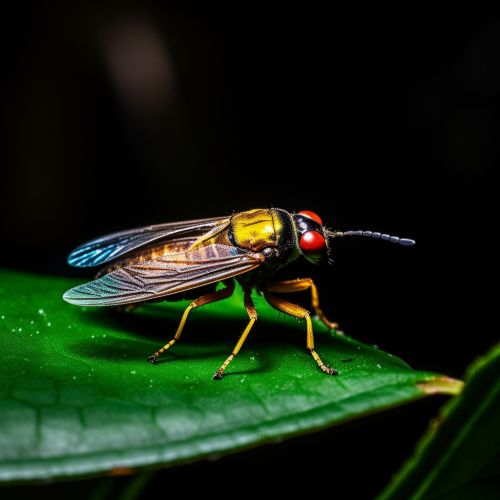Mechanisms of Bioluminescence in Terrestrial Organisms
Introduction
Bioluminescence, the emission of light by a living organism as a result of a biochemical reaction, is a fascinating phenomenon observed in a variety of terrestrial organisms, including certain species of fungi, insects, and worms. This article delves into the mechanisms behind this intriguing natural spectacle, exploring the biochemical processes, genetic factors, and evolutionary implications involved.
Biochemical Mechanisms
The primary mechanism of bioluminescence involves the oxidation of a light-emitting molecule, known as a luciferin, by an enzyme called luciferase. This reaction, which also involves the presence of oxygen, produces a chemically excited state that releases energy in the form of light when it returns to its ground state.


In some organisms, such as fireflies, the luciferin-luciferase reaction is directly controlled by the nervous system. The nerve cells release a neurotransmitter that triggers the opening of calcium channels in the light-producing cells, or photocytes. The influx of calcium ions then stimulates the production of light.
Genetic Factors
The genes encoding for luciferin and luciferase have been identified in several bioluminescent organisms. These genes are often organized in a cluster, known as a lux operon, which allows for coordinated expression and regulation of bioluminescent traits.
Evolutionary Implications
Bioluminescence is believed to have evolved independently multiple times across different lineages. This convergent evolution suggests that the ability to produce light confers significant survival advantages, such as predator avoidance, prey attraction, and mate selection.
Bioluminescence in Different Organisms
- Insects
Among terrestrial organisms, bioluminescence is most commonly observed in insects, particularly beetles of the family Lampyridae, commonly known as fireflies. Fireflies produce light in specialized organs located in their abdomen, which contain large amounts of luciferin and luciferase.
- Fungi
Several species of fungi, collectively known as bioluminescent fungi, are also capable of producing light. The glow emitted by these fungi, often referred to as "foxfire" or "fairy fire", is produced by a luciferin-luciferase system similar to that found in fireflies.
- Worms
Certain species of terrestrial worms, such as the New Zealand glowworm Arachnocampa luminosa, also exhibit bioluminescence. These worms produce light in a specialized organ known as a photophore, which contains a luciferin-luciferase system.
Conclusion
The mechanisms of bioluminescence in terrestrial organisms are a testament to the remarkable adaptability and diversity of life on Earth. Through a combination of biochemical reactions, genetic factors, and evolutionary pressures, these organisms have developed the ability to produce their own light, illuminating the dark corners of our planet in a captivating display of nature's ingenuity.
